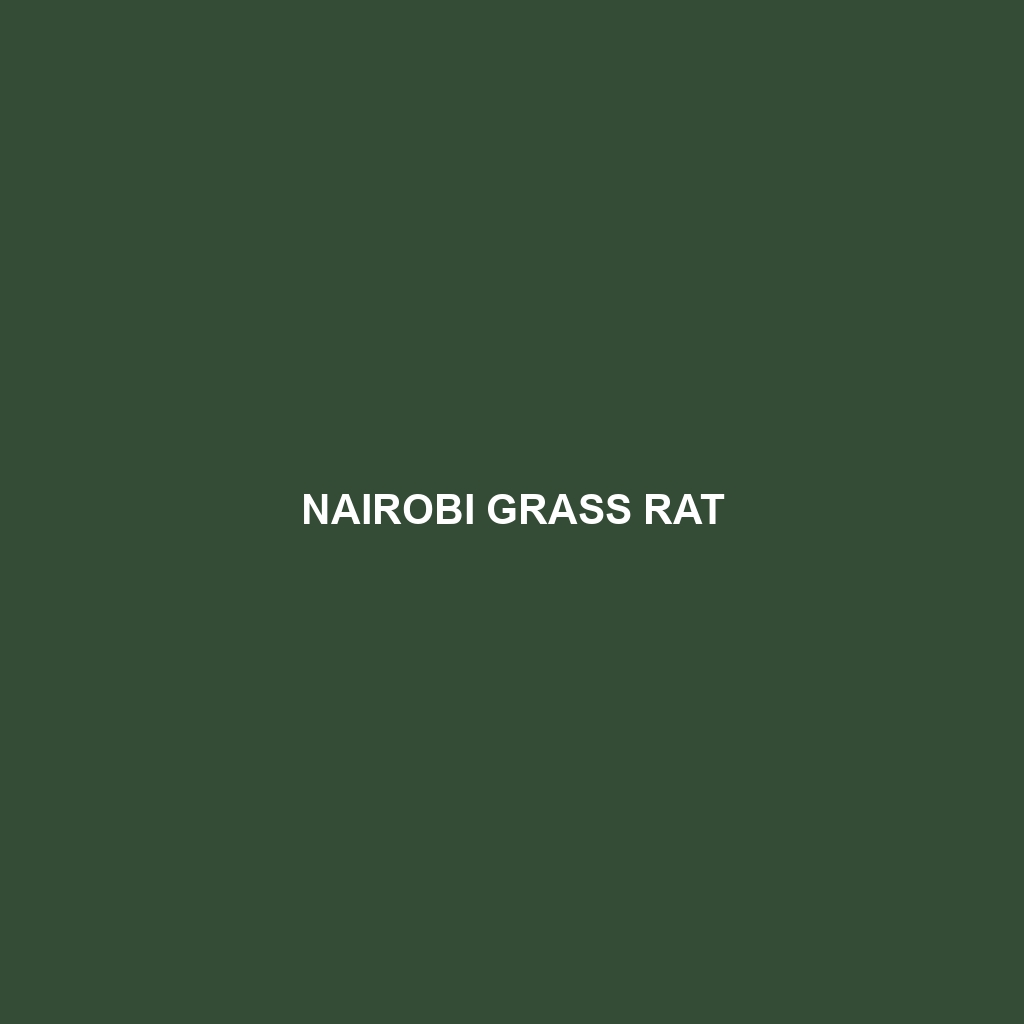Nairobi Grass Rat
Common Name: Nairobi Grass Rat
Scientific Name: Arvicanthis nairobae
Habitat
The Nairobi Grass Rat is primarily found in the urban and peri-urban areas of Nairobi, Kenya. This species thrives in grasslands, scrublands, and agricultural fields, particularly in regions where dense vegetation provides ample cover. The Nairobi Grass Rat is well-adapted to both dry and moist environments, often residing in areas characterized by tall grasses and shrubs that offer protection from predators.
Physical Characteristics
Nairobi Grass Rats are medium-sized rodents, typically measuring 25 to 35 cm in length, including a long tail that can be as long as their body. They possess a robust body covered in coarse fur that varies in color from brown to gray, with lighter underbellies. Their large ears and prominent eyes enhance their acute sense of hearing and vision, allowing for quick responses to danger. A distinctive feature of the Nairobi Grass Rat is its sharp, chisel-like incisors, which they use for gnawing on plant materials.
Behavior
These rodents are primarily nocturnal, exhibiting high levels of activity during the night while resting during the day in burrows they dig in the ground. Nairobi Grass Rats are social animals, often found in groups, and display a range of communicative behaviors such as vocalizations and scent marking. They are also known for their agility in climbing and jumping, which aids in evading predators and accessing food in higher vegetation.
Diet
The diet of the Nairobi Grass Rat is herbivorous, consisting mainly of grasses, seeds, fruits, and bulbs. They use their strong teeth to forage and break down tough plant materials. This species plays a significant role in seed dispersal within its habitat, contributing to the ecological balance. Their feeding habits make them an important part of the grassland ecosystem, as they help maintain vegetation health by controlling plant growth.
Reproduction
Nairobi Grass Rats breed throughout the year, with peaks in reproductive activity during the rainy season when food is abundant. A female can give birth to a litter of 3 to 8 young after a gestation period of approximately 20 to 30 days. The young are born hairless and blind but grow rapidly, becoming sexually mature within a few months. Parental care is typically shared among adults within the group, offering additional protection for the young.
Conservation Status
Currently, the Nairobi Grass Rat is classified as Least Concern by the IUCN. However, habitat loss due to urbanization and agricultural expansion poses potential threats to their populations. Conservation efforts are essential to monitor their distribution and ensure their habitat remains intact in the face of continued development.
Interesting Facts
One fascinating aspect of the Nairobi Grass Rat is its ability to adapt to urban environments, often being found in residential areas and parks. They are also known for their agile movements and quick reflexes, which help them escape from predators such as birds of prey and snakes. Additionally, their presence in agricultural fields supports pest control by preying on crop-damaging insects.
Role in Ecosystem
The Nairobi Grass Rat plays a crucial role in its ecosystem as both a herbivore and prey species. By consuming a variety of plants, they contribute to the health of grasslands and facilitate seed dispersal. As prey, they are an important food source for a range of predators, including snakes and birds, thus supporting the food web in their habitat. Their behavior also helps aerate the soil through their burrowing, promoting plant growth and soil health.
